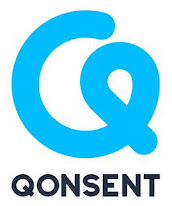TTAB Posts August 2023 Hearing Schedule
The Trademark Trial and Appeal Board (Tee-Tee-Ā-Bee) has scheduled nine oral hearings for the month of August 2023. All hearings will be held via video conference except for the third hearing, which will be "In Person." Briefs and other papers for each case may be found at TTABVUE via the links provided.

August 3, 2023 - 11 AM: TF Intellectual Property Pty Ltd v. Kenneth Thomas, Opposition No. 91270193 [Section 2(d) opposition to registration of KULTURE KINGS & QUEENS for "Entertainment services in the nature of development, creation, production, distribution, and post-production of documentaries about the history and ongoing impact of urban and hip hop culture; Entertainment services in the nature of production of documentaries about the history and ongoing impact of urban and hip hop culture; Entertainment media production services for motion pictures, television and Internet; Film and video film production; Film distribution; Entertainment services, namely, displaying a series of films; Multimedia entertainment services in the nature of development, production and post-production services in the fields of video and films," in view of the registered marks CULTURE KINGS and CULTURE C KINGS & Design for apparel, streetwear, and accessories, consulting, advertising, business management, commercial design, and barber shop services.]
August 3, 2023 - 1 PM: Mealpass, Inc. v. Mealpal, Inc., Cancellation No. 92077915 [Petition for cancellation of a registration of the mark MEALPASS for "online marketplace that offers a membership plan to select and purchase lunch from participating restaurants," on the ground of abandonment.]
August 8, 2023 - 11 AM: In re Molina Healthcare, Inc., Serial Nos. 90887104 and 90887134 [Refusals to register MY HEALTH PERKS and MOLINA MY HEALTH PERKS for "Providing information in the fields of health and wellness," absent a disclaimer of "HEALTH PERKS."]

August 9, 2023 - 11 AM: Billy Stott v. Split Decision Music, LLC, Opposition No. 91249613 [Opposition to registration of SPLIT DECISION for "Entertainment services in the nature of live visual and audio performances, namely, musical rock band" on the grounds of nonownership, fraud, and likelihood of confusion with the identical mark allegedly used first by the opposer for the same services.]
August 9, 2023 - 1 PM: In re First Automotive Service Corporation, Serial No. 90328106 [Section 2(d) refusal of KEEPING YOU ON THE ROAD for "Third-party extended warranty services, namely, vehicle service contracts on vehicles manufactured by others for mechanical breakdown and servicing; insurance services, namely, underwriting and administration of extended warranty contracts in the field of automobiles," in view of the registered mark NVP WARRANTY KEEPING YOU ON THE ROAD! & design for "extended warranty services, namely, service contracts; Providing extended warranties on motor vehicles, namely, extended service contracts covering mechanical breakdown or failure in which a vehicle dealer will provide repairs.]
August 10, 2023 - 1 PM: K2 Sports, LLC v. Joyride Snowboards LLC, Opposition No. 91263939 [Opposition to registration of JOYRIDE SNOWBOARDS for "snowboards" [SNOWBOARDS disclaimed] on the ground of likelihood of confusion with the registered mark RIDE for snowboards and accessories.]
August 17, 2023 - 2 PM: Graco Minnesota Inc. v. Zhejiang Rongpeng Air Tools Co., Ltd., Opposition No. 91247343 [Opposition to registration of AEROPRO for "Coffee grinders, other than hand-operated; Compressed air machines; Electric hand-held drills; Electric nail extractors; Fertilizer distributing machines, other than hand-operated implements; Glue guns, electric; Lifting jacks other than hand-operated; Machine tools for forming, riveting, swaging, and flaring of metal and plastics; Mufflers for motors and engines; Painting machines; Pumps for machines; Rivet guns; Vacuum pumps," in view of the registered mark AIRPRO for paint spray guns, air spray guns, manual air spray guns, and automatic air spray guns.]
August 29, 2023 - 1 PM: In re ProSys Information Systems, Inc., Serial Nos. 88962334 [ refusal of PROSYS & globe design for, inter alia, "Online retail store services in the field of bundled information technology products in the nature of hardware and software" and for "consulting services in the fields of selection, implementation, integration and use of computer hardware and software systems for others," in view of the registered mark PROSYS & design for “Software as a service (SAAS) services featuring software for assessing risk and compliance in supply chains; Design and development of software for assessing risk and compliance in supply chains; Consulting services in the field of vendor management solutions software as a service (SAAS); Planning, design and management of information technology systems comprised of computer software for vendor management solutions; Providing temporary use of online, non-downloadable enterprise software for vendor and supply chain management.”]

August 30, 2023 - 1 PM: Four Seasons Brands, LLC v. Kirstie L. Crivello, Opposition No. 91233211 [Opposition to registration of FOUR SEASONS OUTDOOR LIVING CO. & design for "Construction consultation," on the ground of likelihood of confusion with the mark FOUR SEASONS and formatives thereof for patio covers, liferooms, pergolas, pool enclosures, carports, screens, awnings, windows, decking, patio rooms, greenhouses and solariums and for the sale, manufacture, design, construction (including construction related services such as provision of and/or assistance with engineering drawings, engineering consultation and technical support), and installation thereof.]
Read comments and post your comment here.
TTABlog comment: See anything interesting? Any WYHA?s, WYHO?s, etc.
Text Copyright John L. Welch 2023.













.gif)



























